
Introduction
The Western Digital WD_BLACK SN7100 is a new SSD in Western Digital’s Black lineup geared for gaming PCs and handheld consoles. It is a PCIe 4.0 Gen4 M.2 NVMe DRAM-less SSD featuring a read speed of up to 7,250MB/s and 6,900MB/s write speeds of up to 2TB configuration. The WD_BLACK SN7100 aims for performance at a reasonable cost, with 500GB, 1TB, and 2TB options.
The relationship between Western Digital (WD) and SanDisk may be a bit confusing, but it really is simple. In 2016, Western Digital acquired SanDisk, and as of 2023 Western Digital announced plans to split the two companies. In the latter half of 2024, the split was completed, and SanDisk took over Western Digital’s flash storage products, i.e. their SSD lineup. Hence, you will now find Western Digital’s line of SSDs, including the Black series, under SanDisk’s website and shop.
Under Western Digital’s (SanDisk’s) Internal SSD lineup, you’ll find the WD_BLACK series, as well as the WD Blue series, WD Red series, and WD Green series, which are familiar to WD’s brand. The WD Black series remains WD’s premier drives for high-speed gaming performance and features. At the high end, you’ll find the WD_BLACK SN850X series which launched over 2 years ago and has a DRAM-cache. New for 2025 is the WD_BLACK SN7100 series, which does not have a DRAM-cache, but has a new WD/SanDisk in-house controller, 3D TLC NAND flash, and is priced at a more affordable pricing position.
The new WD_BLACK SN7100 is an upgrade for the previous generation WD_BLACK SN770 released 3 years ago. The new WD_BLACK SN7100 NVMe SSD is built for better gaming performance providing up to 35% performance boost and 100% better power efficiency over the previous generation WD_BLACK SN770 NVMe SSD. The new WD_BLACK SN7100 is geared for desktop PCs, laptops, and gaming handhelds in mind due to its power efficiency and slim design. In our WD_BLACK SN7100 1TB SSD (WDS100T4X0E-00CJA0) review, we’ll test performance and load times.

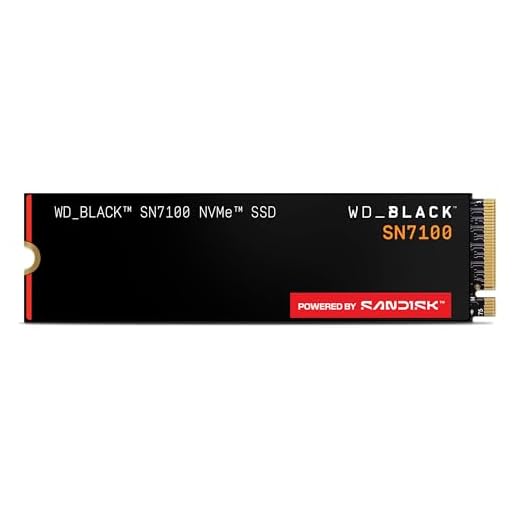



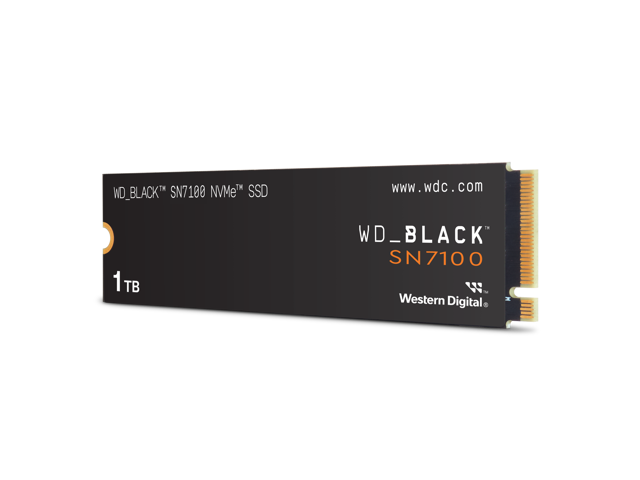
Western Digital WD_BLACK SN7100
The Western Digital WD_BLACK SN7100 SSD is a PCI-Express 4.0 (Gen4x4) M.2 2280 NVMe SSD based on an in-house “Polaris 3” controller and Kioxia 218-L 3D TLC NAND flash. The 500GB model is rated at 6,800MB/s read and 5,800MB/s write performance. The 1TB model (we are reviewing the WDS100T4X0E) and the 2TB model are rated at 7,250MB/s read and 6,900MB/s write performance. The 1TB and 2TB model are rated at 1000K IOPS Random Read and and 1400 IOPS Random Write performance. The 1TB model we are reviewing has an endurance rating of 600 TBW while the 2TB model has an endurance rating of 1,200 TBW. Western Digital offers a 5-year Limited Warranty.
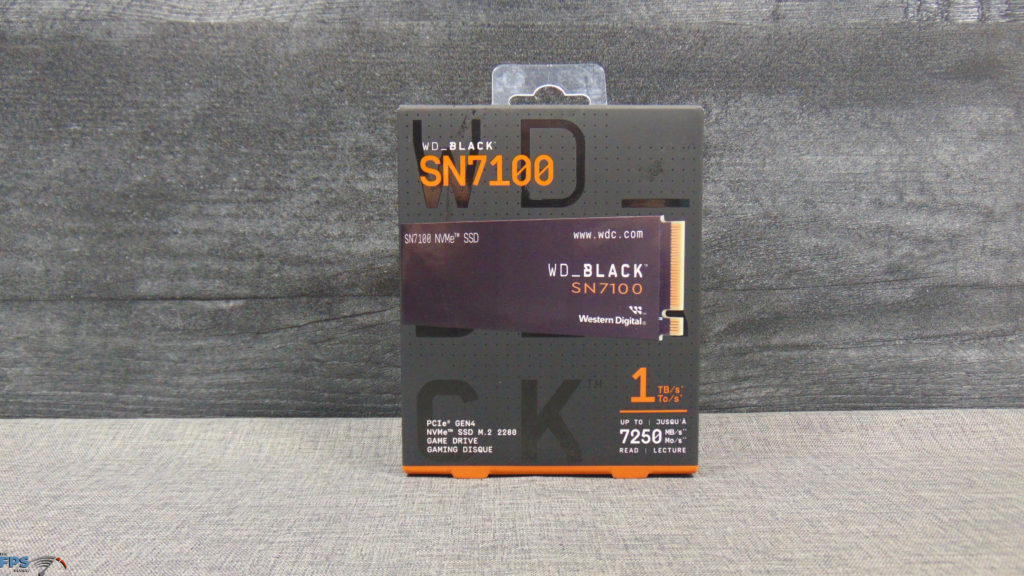
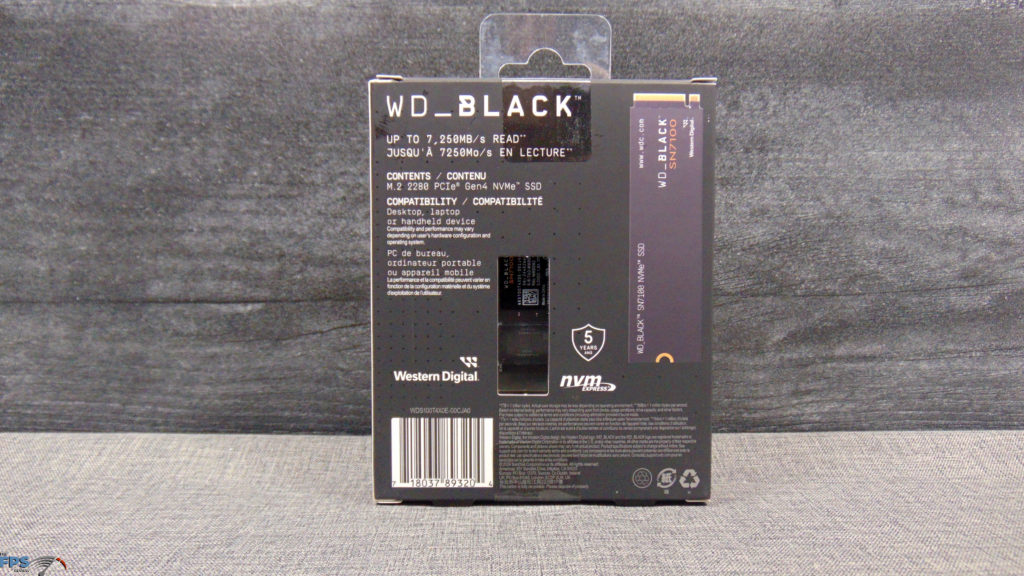
The Western Digital WD_BLACK SN7100 1TB SSD comes in a very flattering box, with a nice color scheme and a window on the back to view the SSD inside. It clearly states in large font the capacity, as well as the rated read speeds, which is nice. This SSD comes with a lengthy installation manual inside, and the bare SSD with no stickers or heatspreaders.
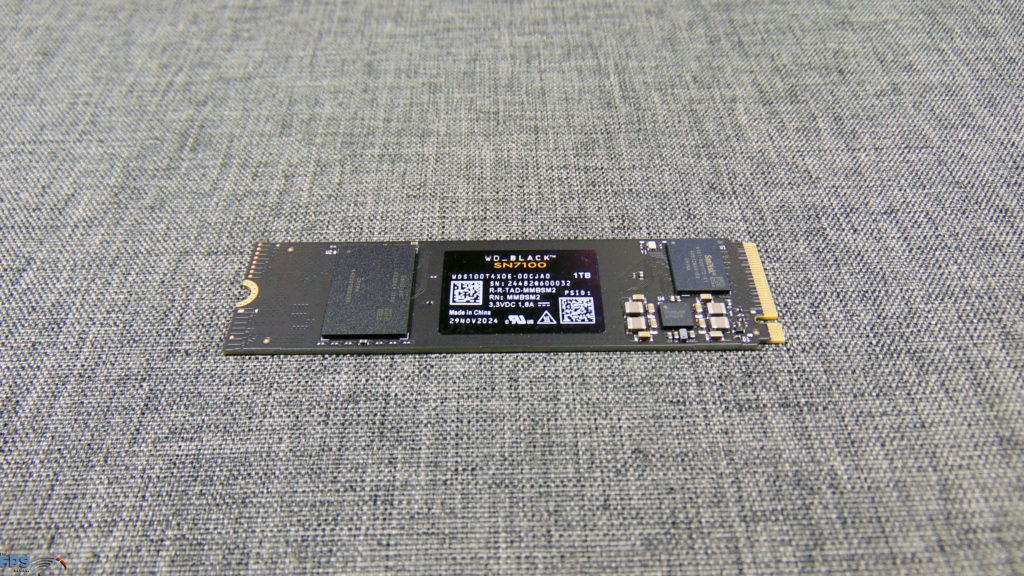
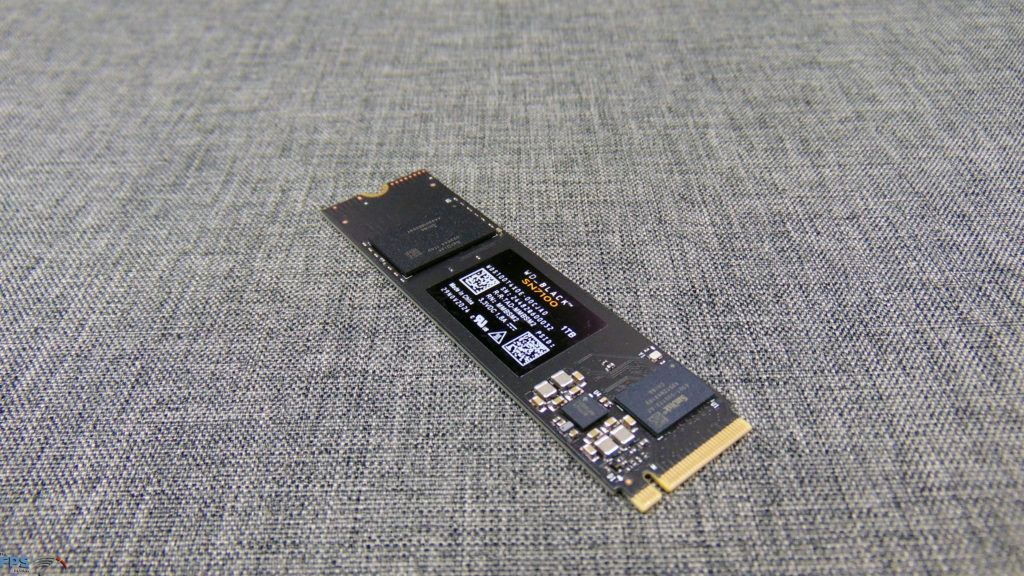
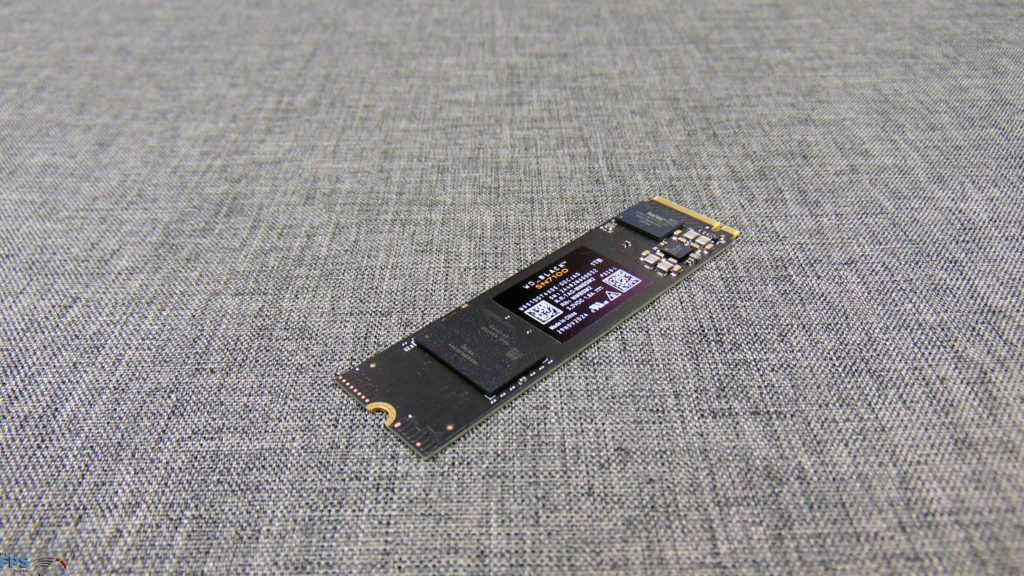
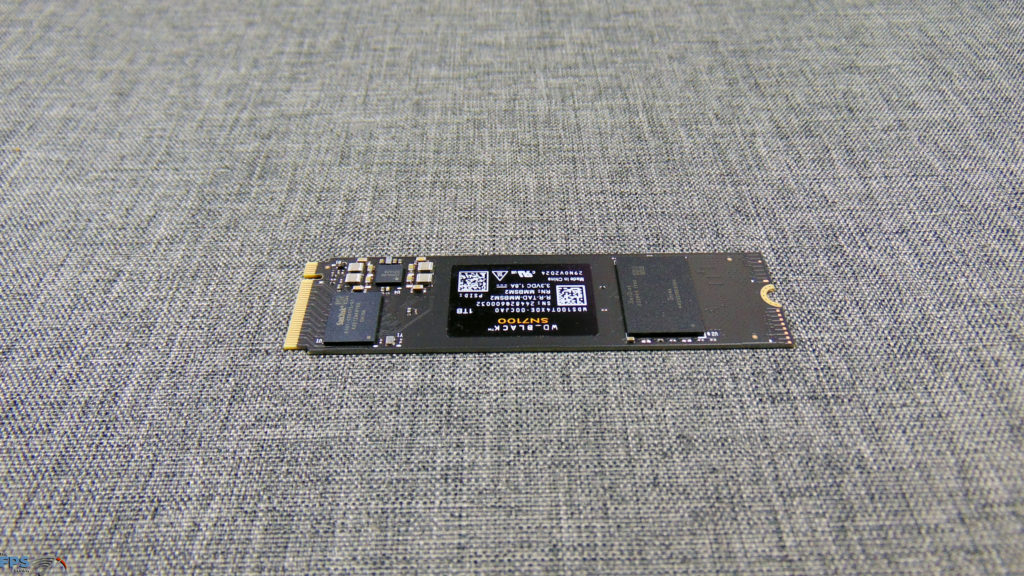
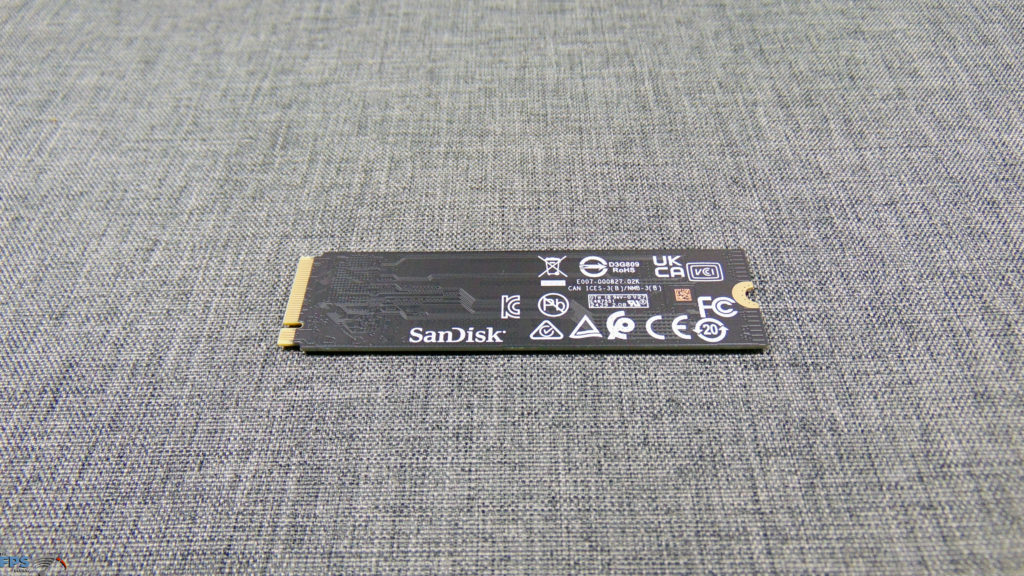
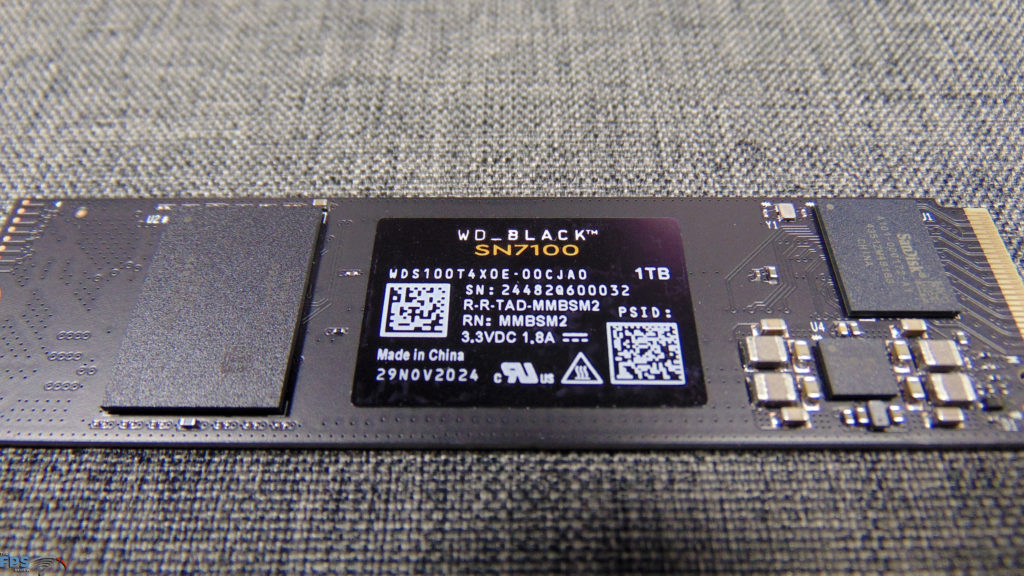
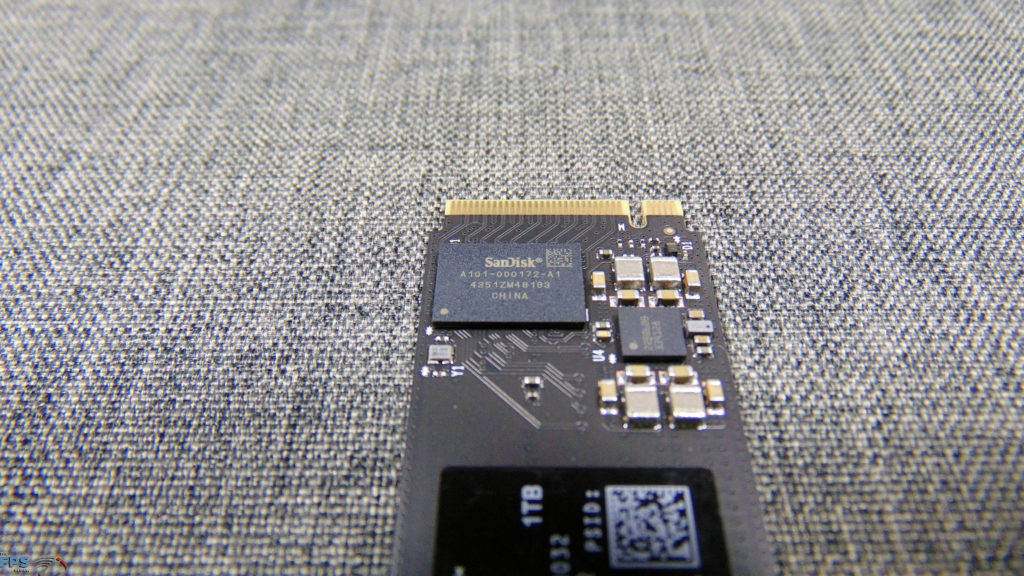
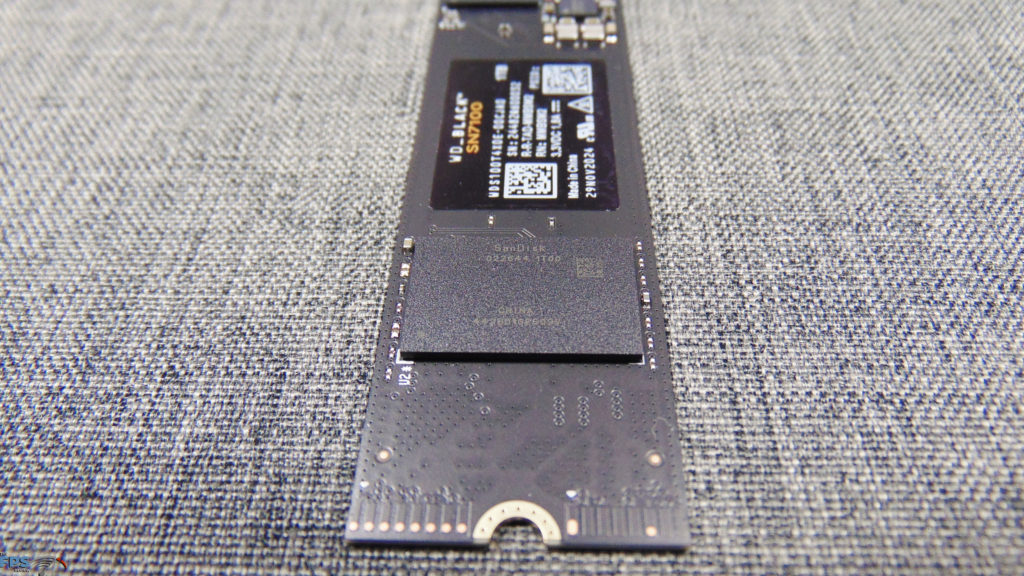
You will see that the Western Digital WD_BLACK SN7100 1TB SSD is a one-sided SSD, lending to its usage in laptops and handheld consoles, you only need to cool one side. Both the controller and 3D TLC NAND flash are on a single side, even in the 2TB model.
On board you will find that the Western Digital WD_BLACK SN7100 1TB SSD utilizes an in-house Western Digital controller, this one is labeled: SanDisk A101-000172-A1 and is dubbed the “Polaris 3” controller, which is a 4-channel DRAM-less controller relying on Host Memory Buffer. The 3D TLC NAND flash is labeled: SanDisk 022644 1T00 and is actually made by Kioxia based on their BiCS 8 218-layer 3D TLC NAND flash.
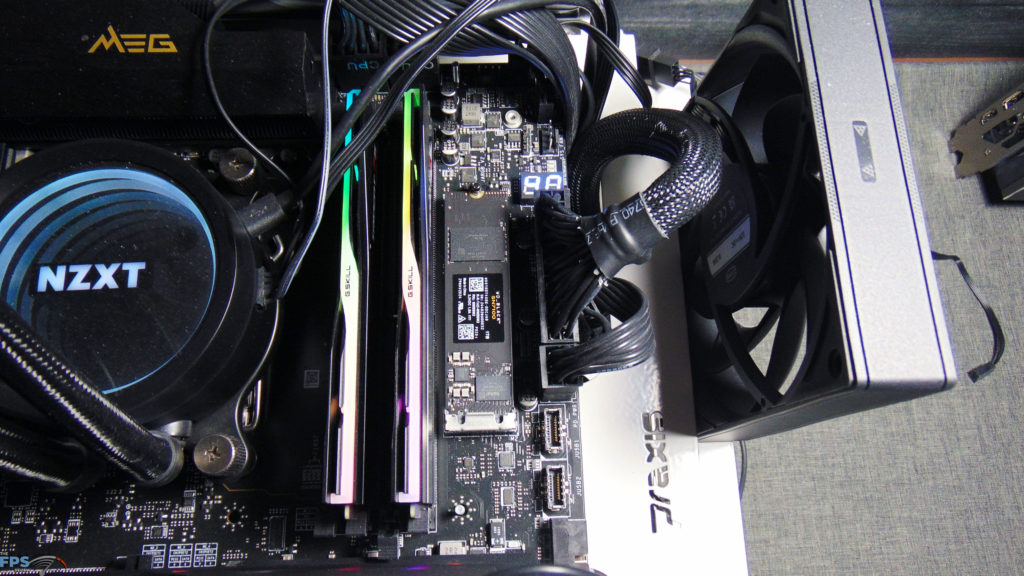
When installed, be sure to install your motherboard heatsink for the M.2 slot, with the drive bare, it will get very hot without a direct fan cooling it, or a heatsink. We tested the SSD with a fan blowing over it, which kept it cool, but you should install your motherboard’s M.2 heatsink before operating, we have temperatures shown with and without the fan on the conclusion page. This particular SSD did not come with a heatspreader or heatsink, and it would have benefited if a heatspreader had been included.
